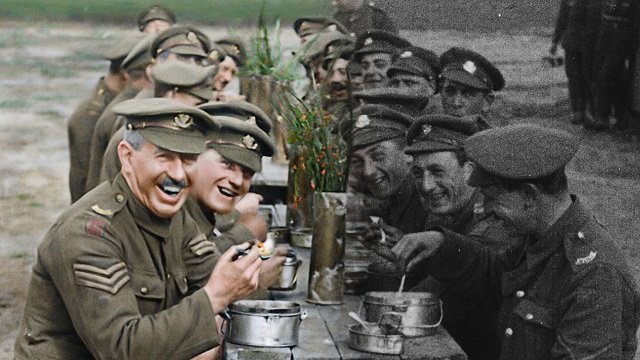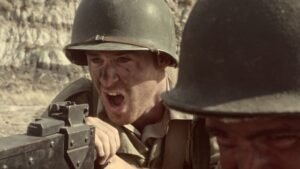Thousand Yard Stare: A Psychological Trauma

Thousand Yard Stare: You have heard about a lot of expressions. Expressions come according to your emotions. Emotions come in response to some action which we say reaction. Now what if I will say to you that there is also an emotionless expression? An expression that contains no emotions. Now that’s a camouflage, because if you are expressing something then it is based on the emotion as a reaction to something. So why I said it is a camouflage that I will explain to you through this article. We will share with you that emotionless expression known as a Thousand-yard stare.
So to know about this unique, confusing, and interesting thing stay connected with our well-researched and well-informed article. I know this topic already gave you some shocking expression on your face. So let’s shift that shocking or confusing expression into an emotionless expression. Even I’m also excited to write this article.
Define Thousand Yard Stare
It is a kind of expression which contains no emotion or feeling in it. Remember I mentioned above that it is camouflage. Now I will tell you why. People who face Thousand-yard stare it is because of some massive stress or some kind of depression. Now just think can it be emotionless? I think it is the worst emotion till date.
Now you are thinking about where this word came from or how this is connected to its meaning. So no problem let’s find out the answer to your question.
There was a painting named Marines Call it that 2000 Yard Stare. This painting was made by Tom Lea. It was published in the Life Magazine in the year 1945. This painting reflects a soldier of World War II who was standing on a badly burnt battlefield and he was looking blank and disconnected.
Symptoms of Thousand Yard Stare
The person may be showing signs of detachment, lack of attention, or emotionlessness
The person may be disoriented and oblivious to their surroundings.
He or she might not react well to your actions or words.
A dig into the history
According to the research, it is not a new thing. There was a Historian named Herodotus. He told about an Athenian warrior whose name was Epizelus. It was an incident of a Marathon battle in the year 440 BC. He saw that his friend and comrade got killed in combat, after seeing that Epizelus became blind on the spot. His blindness was not because of any physical injury. It was just because of that instant shock he got. It took years for him to recover.
World War II
Both the best and the worst of times were consumed by World War II. Among the numerous negative aspects of the battle were illnesses and fatalities. The best of times feature notable captains and the increased acceptance of women. The soldiers who were allowed to return home were also imprisoned, in addition to the POWs. The American Legion Magazine article “Mysterious Maladies” contains information regarding World War II veterans who suffer from PTSD (Post Traumatic Stress Disorder). One is that soldiers who suffered from this ailment due to combat had a difficult time convincing doctors they were sick for thirty years.
Not only that, but if you also look at Lea Thomas’ picture The Two-Thousand Yard Stare, the message appears to spring out. The man in the artwork had witnessed something that might have left him permanently traumatized. The pictures will not only remain lodged in his mind, but they will also have an impact on his physical attributes.
Millions of soldiers and civilians worldwide witnessed even greater bloodshed and devastation during World War Two. For many who experienced trauma on the battlefield and went on to have mental breakdowns, war fatigue became the new diagnosis. Twenty-one-year-old Marine Private Eugene Sledge knew what it felt like to be caught in the middle of a battle in the Pacific during World War Two. In his autobiographical book With the Old Breed: At Peleliu and Okinawa
Something More
Furthermore, the thousand-yard stare represents the collective cost of war on society as a whole, transcending personal experiences. It attests to the human cost of war, which includes not only the lives lost and the physical damage done to bodies but also the broken spirits and shattered minds of those who leave the battlefield never to return. This makes it a sobering reminder of how important it is to work toward harmony and understanding in a world where violence has driven people apart far too frequently.
The stare is a complicated combination of memories, emotions, and survival instincts. It represents a dissociative condition, in which the mind dissociates itself from the present as a protective measure against excessive stress. Soldiers may go into this dissociative state during combat to protect themselves from the violence going on around them. They may withdraw into a mental stronghold where they can withstand the unbearable.

Conclusion
To sum up, the thousand-yard look is a potent illustration of the psychological damage caused by conflict. It is a silent cry from the bottom of the human heart that has been heard for decades, serving as a constant reminder of the atrocities that should never be forgotten. Let us take heed of the lessons inherent in the haunting gaze of those who have witnessed the worst of humanity as we face the legacy of past battles and fight relentlessly to guarantee that their sacrifice was not in vain.
I hope you found this article informative. Thank you for being with the article till the end. See you next time.







